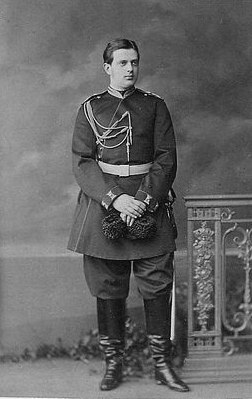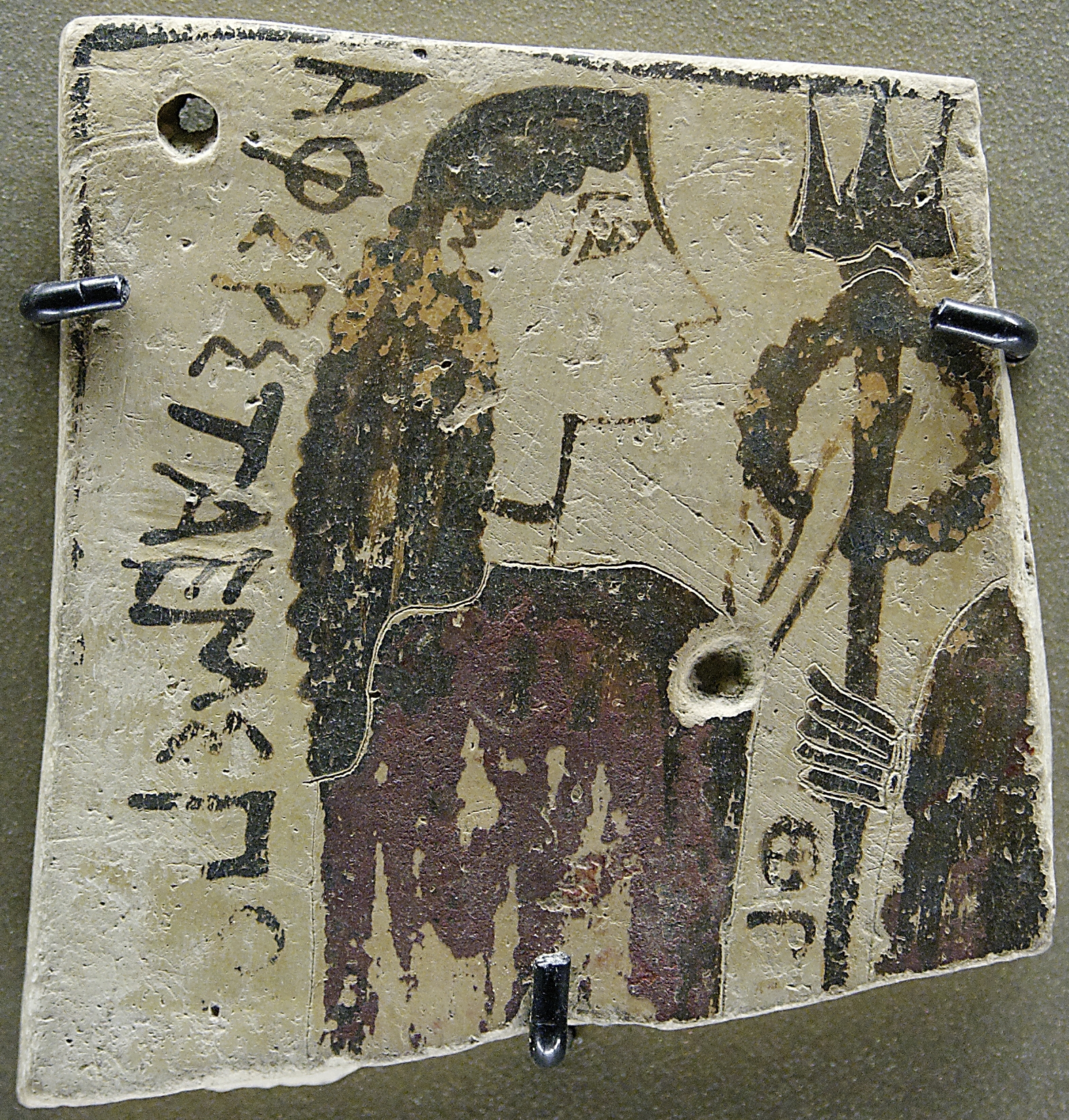|
La Perle (ballet)
''La Perle'' ( en. ''The Pearl'') ( ru. «Жемчужина» or «Прелестная жемчужина»; ''Zhemchuzhina'' or ''Prelestnaya Zhemchuzhina'') ( en. ''Pearl'' or ''Pretty Pearl'') is a ''ballet-divertissement'' in one act, with libretto and choreography by Marius Petipa and music by Riccardo Drigo. History ''La Perle'' was created as a pièce d'occasion for a lavish gala given at the Bolshoi Theatre of Moscow in celebration of the coronation of Emperor Nicholas II and Empress Alexandra Fydorovna. The ballet had its premiere after a performance of scenes from Mikhail Glinka's opera ''A Life for the Tsar'' on . The original cast of ''La Perle'' featured the highest ranking dancers from the St. Petersburg and Moscow Imperial theatres. While the ballet was in the early stages of production, a list of potential dancers for inclusion in the cast was created for review by a committee responsible for the coronation and its subsequent celebrations. Among those chosen for ... [...More Info...] [...Related Items...] OR: [Wikipedia] [Google] [Baidu] |
Emperor Nicholas II
Nicholas II or Nikolai II Alexandrovich Romanov; spelled in pre-revolutionary script. ( 186817 July 1918), known in the Russian Orthodox Church as Saint Nicholas the Passion-Bearer,. was the last Emperor of Russia, King of Congress Poland and Grand Duke of Finland, ruling from 1 November 1894 until his abdication on 15 March 1917. During his reign, Nicholas gave support to the economic and political reforms promoted by his prime ministers, Sergei Witte and Pyotr Stolypin. He advocated modernization based on foreign loans and close ties with France, but resisted giving the new parliament (the Duma) major roles. Ultimately, progress was undermined by Nicholas's commitment to autocratic rule, strong aristocratic opposition and defeats sustained by the Russian military in the Russo-Japanese War and World War I. By March 1917, public support for Nicholas had collapsed and he was forced to abdicate the throne, thereby ending the Romanov dynasty's 304-year rule of Russia (1613� ... [...More Info...] [...Related Items...] OR: [Wikipedia] [Google] [Baidu] |
Grand Duke Vladimir Alexandrovich Of Russia
Grand Duke Vladimir Alexandrovich of Russia (russian: Влади́мир Александрович; 22 April 1847 – 17 February 1909) was a son of Emperor Alexander II of Russia, a brother of Emperor Alexander III of Russia and the senior Grand Duke of the House of Romanov during the reign of his nephew, Emperor Nicholas II. Grand Duke Vladimir followed a military career and occupied important military positions during the reigns of the last three Russian Emperors. Interested in artistic and intellectual pursuits; he was appointed President of the Academy of Fine Arts. He functioned as a patron of many artists and as a sponsor of the Imperial ballet.Perry & Pleshakov, ''The Flight of the Romanovs '', p. 35 During the reign of his father, Emperor Alexander II, he was made Adjutant-General, senator in 1868 and a member of the Council of State in 1872. His brother, Alexander III, also promoted his career. He became a member of the Council of Ministers, Commander of the Imper ... [...More Info...] [...Related Items...] OR: [Wikipedia] [Google] [Baidu] |
Pavel Gerdt
Pavel Andreyevich Gerdt (russian: Па́вел Андре́евич Ге́рдт), also known as Paul Gerdt (near Saint Petersburg, Russia, 22 November 1844 – Vamaloki, Finland, 12 August 1917), was the ''Premier Danseur Noble'' of the Imperial Ballet, the Bolshoi Kamenny Theatre, and the Mariinsky Theatre for 56 years, making his debut in 1860, and retiring in 1916.Gerdt Family, in: The International Encyclopedia of Dance, Oxford University Press, 1998/2005 His daughter Elisaveta Gerdt was also a prominent ballerina and teacher. Gerdt studied under Christian Johansson, Alexander Pimenov (a pupil of the legendary Charles Didelot), and with Jean-Antoine Petipa (Marius Petipa's father, a master of the old pantomime and a student of Auguste Vestris). He was known as the "Blue Cavalier" of the Saint Petersburg stage, creating the roles of nearly every lead male character throughout the latter half of the 19th century, among them Prince Désiré in '' The Sleeping Beauty'' and ... [...More Info...] [...Related Items...] OR: [Wikipedia] [Google] [Baidu] |
Pierina Legnani
Pierina Legnani (September 30, 1863 – November 15, 1930) was an Italian ballerina considered one of the greatest ballerinas of all time. Biography Legnani was born on September 30, 1863, in Milan and originally studied with famous ballet dancer at La Scala, where she developed her technical expertise. Her professional career took off when she appeared as prima ballerina in the Casati ballet, Salandra, at Alhambra Theatre in London. She was titled prima ballerina for La Scala in 1892, before moving to St Petersburg in 1892, where she reached fame dancing with the Tsar's Imperial Ballet at the Maryinsky Theatre until 1901. Under the direction of famous ballet choreographer Marius Petipa, Legnani originated numerous roles including, '' Cinderella'' in 1893, ''Swan Lake'' in 1895, '' Raymonda'' in 1898, and ''La Camargo'' in 1901. She is widely reputed to be the first ballerina to perform 32 fouettés en tournant in the coda of the Grand Pas d'action of the ballet ''Cinderella ... [...More Info...] [...Related Items...] OR: [Wikipedia] [Google] [Baidu] |
Poseidon
Poseidon (; grc-gre, Ποσειδῶν) was one of the Twelve Olympians in ancient Greek religion and myth, god of the sea, storms, earthquakes and horses.Burkert 1985pp. 136–139 In pre-Olympian Bronze Age Greece, he was venerated as a chief deity at Pylos and Thebes. He also had the cult title "earth shaker". In the myths of isolated Arcadia he is related with Demeter and Persephone and he was venerated as a horse, however, it seems that he was originally a god of the waters.Seneca quaest. Nat. VI 6 :Nilsson Vol I p.450 He is often regarded as the tamer or father of horses, and with a strike of his trident, he created springs which are related to the word horse.Nilsson Vol I p.450 His Roman equivalent is Neptune. Poseidon was the protector of seafarers, and of many Hellenic cities and colonies. Homer and Hesiod suggest that Poseidon became lord of the sea when, following the overthrow of his father Cronus, the world was divided by lot among Cronus' three sons ... [...More Info...] [...Related Items...] OR: [Wikipedia] [Google] [Baidu] |
Amphitrite
In ancient Greek mythology, Amphitrite (; grc-gre, Ἀμφιτρίτη, Amphitrítē) was the goddess of the sea, the queen of the sea, and the wife of Poseidon. She was a daughter of Nereus and Doris (or Oceanus and Tethys).Roman, L., & Roman, M. (2010). Under the influence of the Olympian pantheon, she became the consort of Poseidon and was later used as a symbolic representation of the sea. Her Roman counterpart is Salacia, a comparatively minor figure, and the goddess of saltwater. Mythology Amphitrite was a daughter of Nereus and Doris (and thus a Nereid), according to Hesiod's ''Theogony'', but of Oceanus and Tethys (and thus an Oceanid), according to the '' Bibliotheca'', which actually lists her among both the Nereids and the Oceanids. Others called her the personification of the sea itself (saltwater). Marriage to Poseidon When Poseidon desired to marry her, Amphitrite, wanting to protect "her virginity", fled to the Atlas mountains. Poseidon sent m ... [...More Info...] [...Related Items...] OR: [Wikipedia] [Google] [Baidu] |
Lucien Petipa
Lucien Petipa (December 22, 1815 – July 7, 1898) was a French ballet dancer in the early 19th century ( Romantic period), who was the brother of Marius Petipa, the famous ballet master of the Russian Imperial Ballet. He was born in Marseilles and died in Versailles. The son of Jean-Antoine Petipa, he was the original interpreter of many of the principal male roles during the Romantic era, working with choreographers such as Jean Coralli among others. Probably the most known role he created was Albert, duke of Sliesa (later to be known as count Albrecht) in the two-act ballet of ''Giselle'' in 1841, opposite the Italian-born ballerina Carlotta Grisi for whom the ballet was created. Between 1860 and 1868 he was '' maître de ballet'' at the Paris Opera and between 1872 and 1873 he ran the La Monnaie theater in Brussels.Ivor Guest. ''Petipa, (Joseph) Lucien'' oGrove Music Online Notable roles * Albert in ''Giselle'' (1841) * Achmed in '' La Péri'' (1843) Ballets * In 1857 Lu ... [...More Info...] [...Related Items...] OR: [Wikipedia] [Google] [Baidu] |
Vaganova Academy Of Russian Ballet
The Vaganova Academy of Russian Ballet is a school of classical ballet in St Petersburg, Russia. Established in 1738 during the reign of Empress Anna, the academy was known as the Imperial Ballet School until the Soviet era, when, after a brief hiatus, the school was re-established as the Leningrad State Choreographic Institute. In 1957, the school was renamed in honor of the pedagogue Agrippina Vaganova, who cultivated the method of classical ballet training that has been taught there since the late 1920s. Many of the world's leading ballet schools have adopted elements of the Vaganova method into their own training. The Vaganova Academy is the associate school of the Mariinsky Ballet, one of the world's leading ballet companies. Students of the school have found employment with ballet and contemporary companies worldwide, such as the Bolshoi Ballet, The Royal Ballet, American Ballet Theatre and the Mikhailovsky Ballet. History The school was established as the Imperial Theat ... [...More Info...] [...Related Items...] OR: [Wikipedia] [Google] [Baidu] |
Konstantin Sergeyev
Konstantin Mikhaylovich Sergeyev (russian: Константин Михайлович Сергеев; 5 March 1910 (20 February Old Style) – 1 April 1992) was a Russian danseur, artistic director and choreographer for the Kirov Theatre. When the Kirov Ballet returned to Leningrad from Perm (where it had been moved during the war) Sergeyev became the head choreographer of the company. His first major work was to restage Prokofiev's ''Cinderella'', which is still performed in the present day. His teachers at Leningrad State Choreographic Institute: Mariya Kojukhova, Vladimir Ponomaryov, Viktor Semyonov ( Marina Semyonova's first husband). His first wife Feya Balabina was a prima ballerina of the Kirov ballet, as was his second wife Natalia Dudinskaya. He danced with Dudinskaya at the 1946 premiere of his ''Cinderella'' production for the Kirov.Sergey Prokofiev. Sergei Prokofiev: Autobiography, Articles, Reminiscences. University Press of the Pacific Honolulu, 2000, p.290. G ... [...More Info...] [...Related Items...] OR: [Wikipedia] [Google] [Baidu] |
Variation (ballet)
In ballet, a variation (sometimes referred to as a pas seul, meaning to dance alone) is a solo dance. In a classical grand pas de deux, the ballerina and danseur each perform a variation. Examples * ''La Bayadère'' – Gamzatti, Nikiya * ''Coppélia'' – Swanhilda * '' Le Corsaire'' – Medora * '' Diana and Acteon'' – Diana * ''Don Quixote'' – Basilio, Kitri, Cupid * ''The Nutcracker'' – Sugar Plum Fairy * ''Sleeping Beauty'' – Bluebird * ''Swan Lake ''Swan Lake'' ( rus, Лебеди́ное о́зеро, r=Lebedínoye ózero, p=lʲɪbʲɪˈdʲinəjə ˈozʲɪrə, link=no ), Op. 20, is a ballet composed by Russian composer Pyotr Ilyich Tchaikovsky in 1875–76. Despite its initial failur ...'' – Odile (the Black Swan) References {{reflist Variation (ballet) ... [...More Info...] [...Related Items...] OR: [Wikipedia] [Google] [Baidu] |
Petergof
Petergof (russian: Петерго́ф), known as Petrodvorets () from 1944 to 1997, is a municipal town in Petrodvortsovy District of the federal city of St. Petersburg, located on the southern shore of the Gulf of Finland. The town hosts one of two campuses of Saint Petersburg State University and the Petrodvorets Watch Factory, one of the leading Russian watch manufactures. A series of palaces and gardens, laid out on the orders of Peter the Great and sometimes called the "Russian Versailles," is also situated there. The palace-ensemble along with the city center is recognized as a UNESCO World Heritage Site. Palaces, fountains, and gardens Petergof is named after the Peterhof Grand Palace, a sixteen-meter-high bluff lying less than a hundred meters from the shore. The so-called Lower Gardens (''Nizhny Sad''), at comprising the better part of the palace complex land area, are confined between this bluff and the shore, stretching east and west for roughly . The ma ... [...More Info...] [...Related Items...] OR: [Wikipedia] [Google] [Baidu] |








